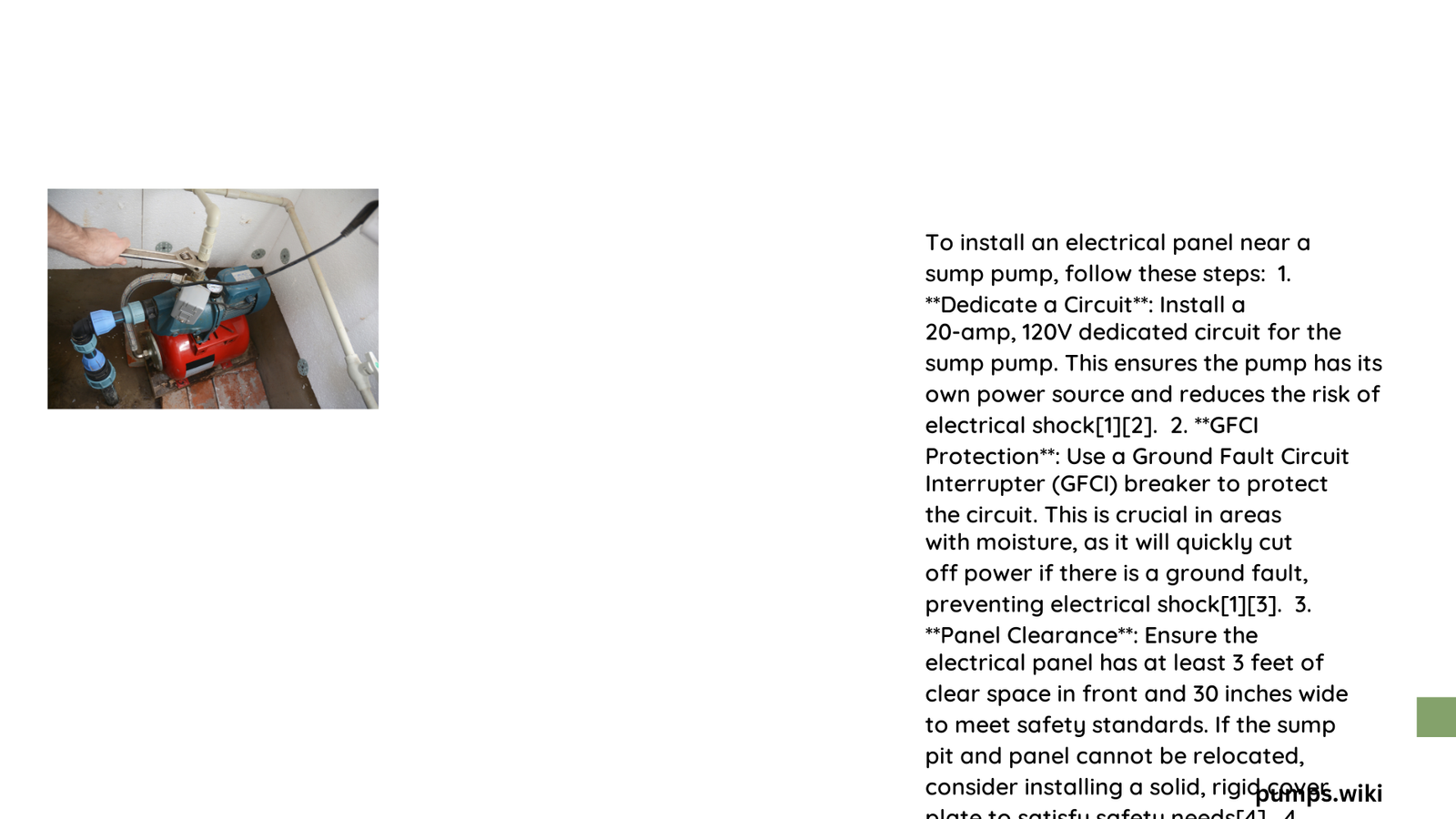Navigating the electrical panel requirements for a sump pump installation demands precise technical knowledge and adherence to safety standards. Homeowners and professionals must understand the critical electrical considerations, including voltage specifications, circuit breaker sizing, wire gauge selection, and proper grounding techniques to ensure reliable and safe sump pump operation. This comprehensive guide will walk you through every essential aspect of connecting your sump pump to the electrical panel.
What Are the Voltage Requirements for Sump Pump Electrical Panels?
Sump pump electrical panel connections require careful attention to voltage specifications. For most residential applications, a 2 HP sump pump demands:
- Voltage Standard: Single-phase 240 volts
- Alternate Voltage: 208V (phase-to-phase in 120/208Y systems)
- Recommended Configuration: Dedicated 240V circuit with matching pump voltage
Voltage Compatibility Considerations
| Voltage Type | Pump Compatibility | Recommended Action |
|---|---|---|
| 240V Panel | Ideal Match | Direct Connection |
| 208V Panel | Potential Mismatch | Verify Pump Specifications |
| 120V Panel | Not Suitable | Require Voltage Conversion |
How to Determine Proper Amperage for Sump Pump Circuits?

Amperage selection is crucial for safe and efficient sump pump operation. Key factors include:
- Circuit Breaker Size: 30 amps typically recommended
- Running Current: Approximately 13 amps (2300 watts)
- Starting Current: Significantly higher than running current
Amperage Calculation Factors
- Pump horsepower
- Distance from electrical panel
- Environmental conditions
- Potential voltage fluctuations
What Wire Gauge Should Be Used for Sump Pump Connections?
Wire gauge selection depends on several critical factors:
- 30 Amp Circuit: Typically 10 AWG or 8 AWG wire
- Distance Considerations: Longer distances may require larger gauge
- Safety Factor: Always choose wire capable of handling maximum potential current
What Safety Precautions Are Essential for Electrical Panel Near Sump Pump?
Critical safety measures include:
- Dedicated Circuit: Prevent overloading
- Proper Grounding: Minimize electrical shock risk
- GFCI Protection: Recommended in specific installation environments
- Code Compliance: Follow NEC and local electrical regulations
How to Install Sump Pump Electrical Connections?
Installation steps:
- Obtain necessary electrical permits
- Select appropriate circuit breaker
- Install dedicated 240V circuit
- Use correct wire gauge and conduit
- Ensure proper grounding
- Schedule professional inspection
What Are Common Electrical Panel Challenges with Sump Pumps?
Potential challenges include:
- Voltage mismatches
- Inadequate circuit breaker sizing
- Improper wire gauge selection
- Lack of dedicated circuit
- Insufficient grounding
Expert Recommendations for Electrical Panel Sump Pump Setup
- Always consult licensed electrician
- Prioritize safety over cost-cutting
- Regularly inspect electrical connections
- Maintain proper documentation
- Update equipment as per manufacturer recommendations
Conclusion
Proper electrical panel configuration is fundamental to sump pump reliability and safety. Careful planning, adherence to electrical codes, and professional guidance ensure optimal performance.
